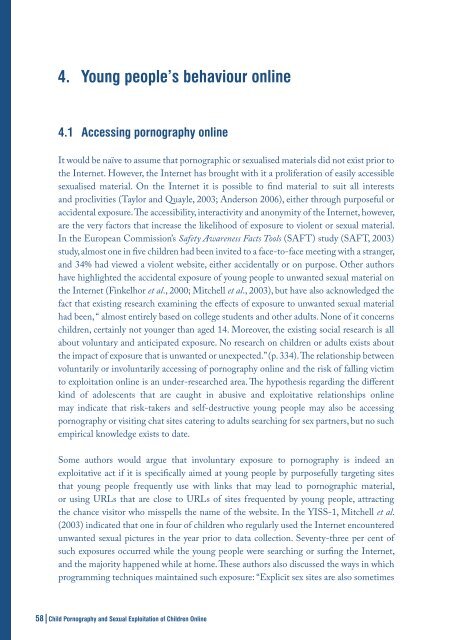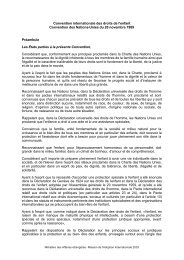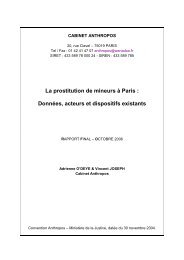child pornography and sexual exploitation of children online
child pornography and sexual exploitation of children online
child pornography and sexual exploitation of children online
Create successful ePaper yourself
Turn your PDF publications into a flip-book with our unique Google optimized e-Paper software.
4. Young people’s behaviour <strong>online</strong><br />
4.1 Accessing <strong>pornography</strong> <strong>online</strong><br />
It would be naïve to assume that pornographic or <strong>sexual</strong>ised materials did not exist prior to<br />
the Internet. However, the Internet has brought with it a proliferation <strong>of</strong> easily accessible<br />
<strong>sexual</strong>ised material. On the Internet it is possible to find material to suit all interests<br />
<strong>and</strong> proclivities (Taylor <strong>and</strong> Quayle, 2003; Anderson 2006), either through purposeful or<br />
accidental exposure. The accessibility, interactivity <strong>and</strong> anonymity <strong>of</strong> the Internet, however,<br />
are the very factors that increase the likelihood <strong>of</strong> exposure to violent or <strong>sexual</strong> material.<br />
In the European Commission’s Safety Awareness Facts Tools (SAFT) study (SAFT, 2003)<br />
study, almost one in five <strong>child</strong>ren had been invited to a face-to-face meeting with a stranger,<br />
<strong>and</strong> 34% had viewed a violent website, either accidentally or on purpose. Other authors<br />
have highlighted the accidental exposure <strong>of</strong> young people to unwanted <strong>sexual</strong> material on<br />
the Internet (Finkelhor et al., 2000; Mitchell et al., 2003), but have also acknowledged the<br />
fact that existing research examining the effects <strong>of</strong> exposure to unwanted <strong>sexual</strong> material<br />
had been, “ almost entirely based on college students <strong>and</strong> other adults. None <strong>of</strong> it concerns<br />
<strong>child</strong>ren, certainly not younger than aged 14. Moreover, the existing social research is all<br />
about voluntary <strong>and</strong> anticipated exposure. No research on <strong>child</strong>ren or adults exists about<br />
the impact <strong>of</strong> exposure that is unwanted or unexpected.” (p. 334). The relationship between<br />
voluntarily or involuntarily accessing <strong>of</strong> <strong>pornography</strong> <strong>online</strong> <strong>and</strong> the risk <strong>of</strong> falling victim<br />
to <strong>exploitation</strong> <strong>online</strong> is an under-researched area. The hypothesis regarding the different<br />
kind <strong>of</strong> adolescents that are caught in abusive <strong>and</strong> exploitative relationships <strong>online</strong><br />
may indicate that risk-takers <strong>and</strong> self-destructive young people may also be accessing<br />
<strong>pornography</strong> or visiting chat sites catering to adults searching for sex partners, but no such<br />
empirical knowledge exists to date.<br />
Some authors would argue that involuntary exposure to <strong>pornography</strong> is indeed an<br />
exploitative act if it is specifically aimed at young people by purposefully targeting sites<br />
that young people frequently use with links that may lead to pornographic material,<br />
or using URLs that are close to URLs <strong>of</strong> sites frequented by young people, attracting<br />
the chance visitor who misspells the name <strong>of</strong> the website. In the YISS-1, Mitchell et al.<br />
(2003) indicated that one in four <strong>of</strong> <strong>child</strong>ren who regularly used the Internet encountered<br />
unwanted <strong>sexual</strong> pictures in the year prior to data collection. Seventy-three per cent <strong>of</strong><br />
such exposures occurred while the young people were searching or surfing the Internet,<br />
<strong>and</strong> the majority happened while at home. These authors also discussed the ways in which<br />
programming techniques maintained such exposure: “Explicit sex sites are also sometimes<br />
58|Child Pornography <strong>and</strong> Sexual Exploitation <strong>of</strong> Children Online















